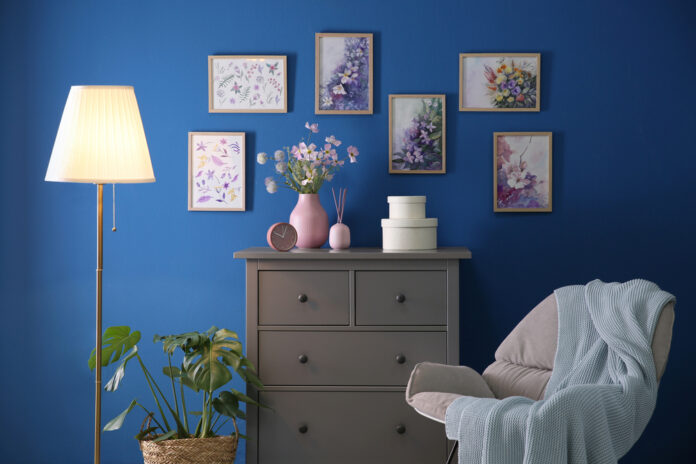Artwork has the magical ability to transform a plain room into a captivating and personalized space. Hanging it is even an art form in itself. Whether you prefer a gallery wall or a single focal piece, it involves careful consideration of the art’s position, height, and arrangement.
The key lies in finding a balance between your personal taste and the overall aesthetics of your space. Taking the time to select the right pieces, plan their arrangement, and hang them with care can elevate your living space and bring life to your walls.
Are you an art enthusiast looking to showcase your collection or a homeowner aiming to spruce up your living space? Let your creativity flow! With these tips in mind, you’ll be able to create a stunning display that reflects your unique style and passion for art.
Choosing the Right Artwork
The first step in hanging artwork is selecting the pieces you want to display. Consider the style, colors, and themes of the artwork and how they complement your existing décor. It’s essential to choose pieces that resonate with you, as art is an expression of your personality and taste.
Creating a Gallery Wall
A gallery wall can be a striking way to showcase multiple pieces of art together. To create a cohesive and visually appealing gallery wall, choose a common theme, such as black and white photography or landscapes. Lay the frames on the floor to experiment with different arrangements before you start hanging them on the wall. It’s essential to maintain consistent spacing between the frames for a polished look.
Measuring And Planning
Before grabbing a hammer, measure the wall area and the size of your artwork. Determine the approximate center of the wall and make a light pencil mark. This will serve as your reference point for positioning the artwork. For gallery walls or larger displays, use painter’s tape to mark the edges of the arrangement on the wall. This way, you can make adjustments without creating unnecessary holes.
Finding the Right Height
One of the most common mistakes when hanging artwork is positioning it too high or too low on the wall. The general rule of thumb is to hang artwork at eye level, which is about 57 to 60 inches from the floor. However, remember that eye level differs for everyone, so consider the average height of the occupants of the room. For gallery walls, find a consistent baseline, such as the bottom edge of all frames, to maintain uniformity.
Using the Right Hardware
The weight and size of the artwork will determine the type of hardware you need. For lightweight frames, adhesive hooks or picture hangers may suffice. For heavier pieces, use wall anchors or screws, ensuring they are securely attached to studs. Always follow the manufacturer’s guidelines for weight limits and installation instructions. Additionally, if you’re renting and want to avoid damaging walls, consider using removable adhesive hooks.
Leveling And Aligning
Nothing ruins the aesthetics of a perfectly hung artwork like uneven frames. Always use a level to ensure your artwork is straight before hammering in the nail or screw. To hang multiple pieces in a straight line, use a long, straight edge or laser level to guide you.
Balancing And Symmetry
Achieving balance is crucial, especially for symmetrical arrangements. If you have a large piece on one side, balance it with a group of smaller pieces on the other side. This creates visual harmony and prevents the room from feeling lopsided. Don’t be afraid to mix different frame sizes and shapes, but keep an overall sense of equilibrium.
Lighting Considerations
Proper lighting can dramatically enhance the impact of your artwork. Avoid placing artwork in direct sunlight, as it can cause fading over time. Instead, use accent lighting such as track lights, picture lights, or wall sconces to highlight your art. Adjustable lighting fixtures allow you to control the angle and intensity of the light, creating a captivating display.

For all of the latest information on our local real estate market in Southwestern Indiana and Northwestern Kentucky, you can always trust the professionals at F.C. Tucker Emge and F.C. Tucker/Collier. Our agents have superior training and resources at their disposal to better educate you about the road to homeownership. Even if you are 6-12 months (or more!) out from making a change, there is a lot to learn about the home buying and selling process, and our agents can help you learn what you need to know so that you can be confident in your decision and have a smooth experience when the time comes. Let’s Talk!




